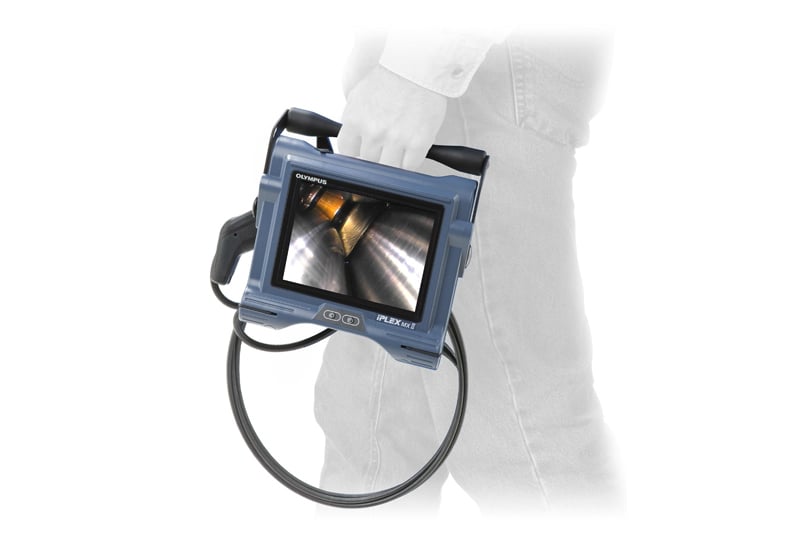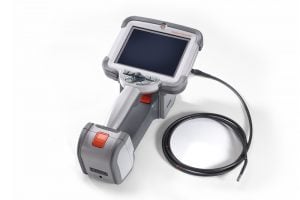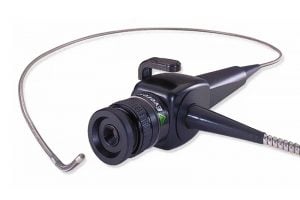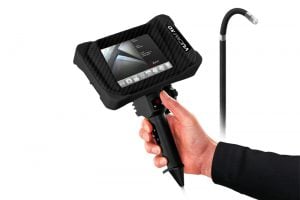RVI: Three Essential Items

Technological advancements in the field of remote visual inspection (RVI) such as improved imaging quality, greater accuracy and integrated robotics are among the reasons that this particular sector of non-destructive testing (NDT) is continuing its upward growth. Experts predict that the wider visual inspection market will have a compound annual growth rate around 8% with the RVI component contributing an increasingly larger portion as adoption rates for these remote technologies grow.
Other growth drivers for the RVI market are the ease-of-use of many of the instruments, greater affordability and an increase in the number of skilled and certified RVI technicians. In this article, we examine three pieces of equipment that are essential when it comes to visual inspection, namely the borescope, the fiberscope and the video scope.
Borescope

The Mentor Visual iQ is one of the most advanced video borescopes on the market. Thanks to its state-of-the-art 3D Phase Measurement and analysis, the Mentor Visual IQ VideoProbe detects visual indications such as corrosion, blockages and cracking quickly and precisely. Contact Us to find out more about the Mentor Visual iQ or any of our other remote visual inspection rentals, or Request a Quote for the Mentor Visual iQ through our online system.
The borescope was one of the first instruments which pioneered the visual inspection industry, enabling technicians to view the inspection area through an illuminated stainless steel tube. An attached camera records images of the view site and enables technicians to see the inspection area on a larger screen. Borescopes are priced at the lower end of the scale because of their limited range of applications (the rigid tube can’t be bent which means it has to have direct access to the test area).
Fiberscope

Fiberscopes: With over 30 standard models from which to choose, you are sure to find the right fiberscope for your inspection application. Standard articulating models have diameters as small as 2.4 mm (0.94 in.) and lengths up to 2.7 m (8.9 ft.). The super-thin fiberoptic technology used by GE Measurement & Control Solutions fiberscopes allows thousands of more fibres to be packed into the same size image bundle. Our ÒSuperfineÓ image guides have up to 50 per cent more fibres than other fiberscopes of similar diameter. The high quality of smaller fibres provides a sharper, smoother image and reveals finer details of the inspection surface.
Fiberscopes took borescope design to a new level of flexibility and function. The stainless steel tube was replaced with optical fibres which meant users could remotely inspect an object or area with the number of fibre optic strands dictating the level of image quality. The fibres also act as the light guide, and as with a borescope, an attached camera records images or enables them to be seen on a large screen. Unsurprisingly, fiberscopes are often called flexible borescopes.
Videoscope

Videoscope VUCAM XO Borescope for Remote Visual Inspection (RVI)
These advanced instruments reflect where the RVI industry is headed – into a new generation of image quality, precision, versatility and functionality. This has been made possible with the introduction of either a charge-coupled device (CCD) or complementary metal-oxide-semiconductor (CMOS) camera chip which is situated close to the distal or inspection end of the instrument which enables vastly improved image quality and resolution.
The evolution of advanced remote visual inspection instruments has really transformed the NDT field as it has enabled accurate inspection of areas that were previously inaccessible such as turbine blades, engines, aircraft fuselage and subsea piping. As mentioned, robotics has been another innovation which has changed the RVI landscape by enabling the development of pipe crawler camera systems. Improvements in image quality and accuracy have also contributed to the growth of the RVI sector.
